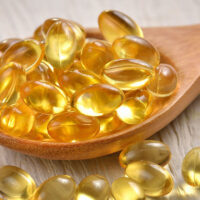The individual objectives of gym training can be many: from fat burning and weight reduction, through muscle mass growth, to enhanced performance, endurance and bigger strength. Nevertheless, whatever the goal, you need to be familiar with the basics and know how to start. With an inappropriate attitude right from the start you will quickly get disappointed and frustrated that you did not get to achieve your goals.
Training plan is a must
If you are chaotic in your workouts, or have overweening ambitions and choose to start with an advanced workout routine that is meant for bodybuilders, you will not come out unscathed. A reliable and effective training should be started by making a plan that will lead you to the results and figure of your dreams, keeping you at all times motivated and satisfied.
The pursuit of your goal will be a lengthy process, even if you are not planning to climb a podium. What you are going to need is patience, perseverance and consequence. But the results will be spectacular.
Full Body Workout (FBW) – a perfect workout for beginners
Each beginner training should involve full-body exercises. The FBW involves all muscle groups during a single session. The sessions are repeated three times a week. With a methodology like this, you will force your whole body to work and give your muscles the right stimuli to grow. And you will avoid overtraining whilst keeping your whole body fit.
Appropriate pauses between workouts are of paramount importance. The common mistake of increasing the intensity of trainings quickly leads to burnout and discouragement.

Warmed up muscles
Remember to warm up your muscles before doing the proper workout. About 10 minutes of an intense aerobic training with a stepper, running tract or an exercise bike, or jogging should be enough to improve your blood circulation. In stage two of the workout, do leg and arm swings, twisted bends and bends, to prepare your joints for the workout. Warm-up is an integral element of the training. Every single exercise needs warmed-up muscles, so you should do at least one warm-up series before each, increasing the number of repetitions. If you abandon warm-ups, you risk getting injured.
Appropriate series for each muscle
Remember to train all muscle groups during your training session. It is best if a training plan contains one or two exercises for each muscle part. Each exercise should be performed in 2 to 3 series, with 8-10 repetitions in each series. Increase the weight as the session progresses, finally leading to resistance and difficulty (muscle collapse).
If you do not feel fatigue after all reps, you should add more weight. But if you are unable to do at least 8 repetitions, this means that your weight is too big. Obviously, you need to adjust the parameters to your capabilities and fitness.
Remember to pause for c.a. 3 minutes between individual exercises. The recommendations above apply to the first 2-3 weeks of working out, in which the muscles adapt to the effort and the body gets prepared to further routine. It is important that you do not overtrain your body in this phase.
Technique is key!
Habits tend to quickly become man’s second nature, and gym exercises are no exception. Technical errors prevent progress, delay the results and make you prone to injuries. By nurturing the right habits, you will be able to easily use the proper technique in more advanced stages of your workout routine.
Increasing workout intensity can be harmful
The initial phase is the phase when your body gets adapted to the work and your muscles get shaped. Although tempting, do not increase the intensity of your training in this phase. Do not use the aid from a partner, do not unload weights during a pending series, do not perform combined series, giant series etc. In the initial phase, too strong stimuli quickly lead to overtraining and, in consequence, hinder muscle mass growth.
Pursue your goals wisely
By wisely sticking to your plan and supporting your trainings with a healthy diet, supplementation and rest periods, you will shortly achieve your goal and see the effects relatively soon. Then, your endorphins will boost your motivation, leading you towards success.




